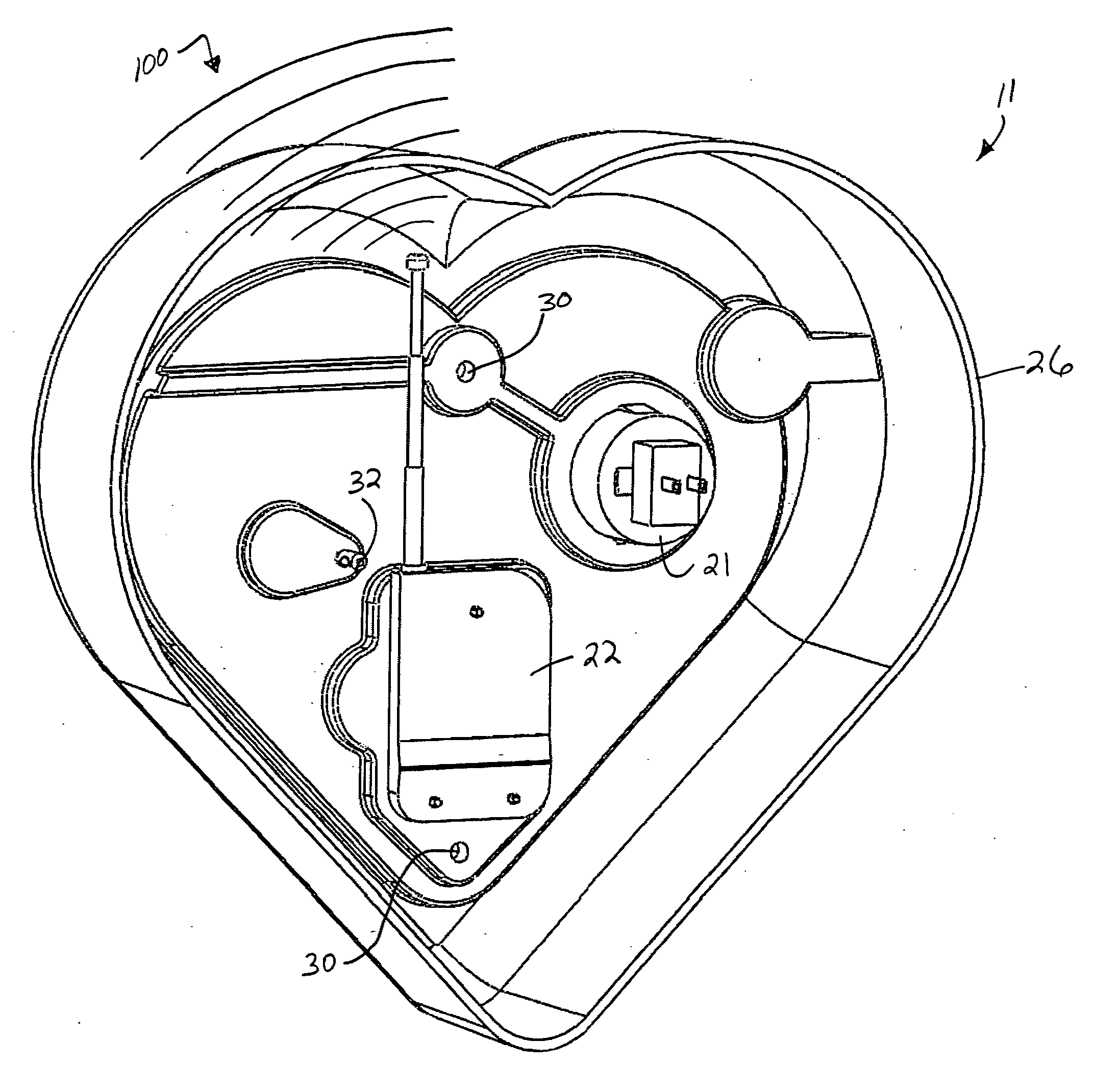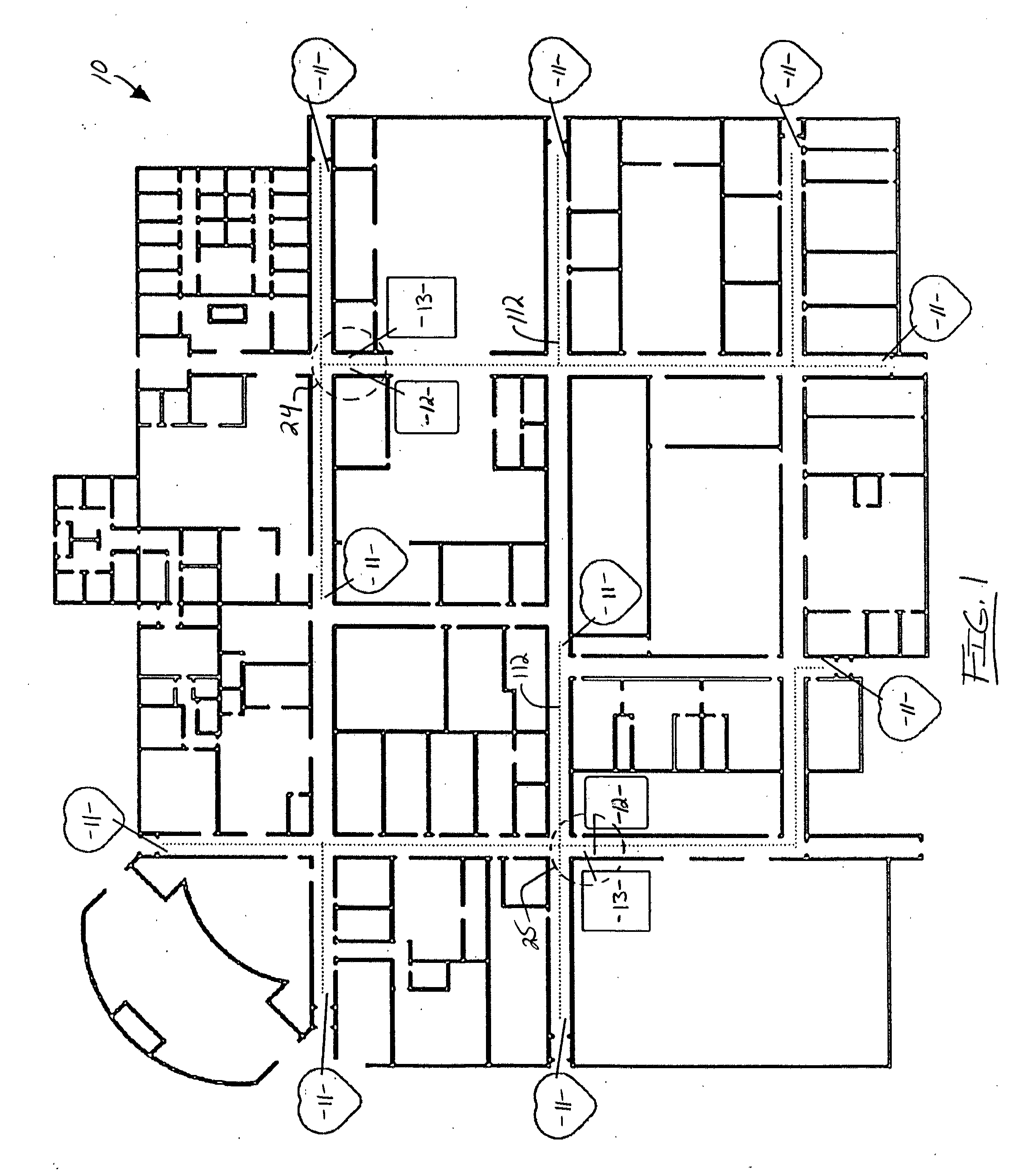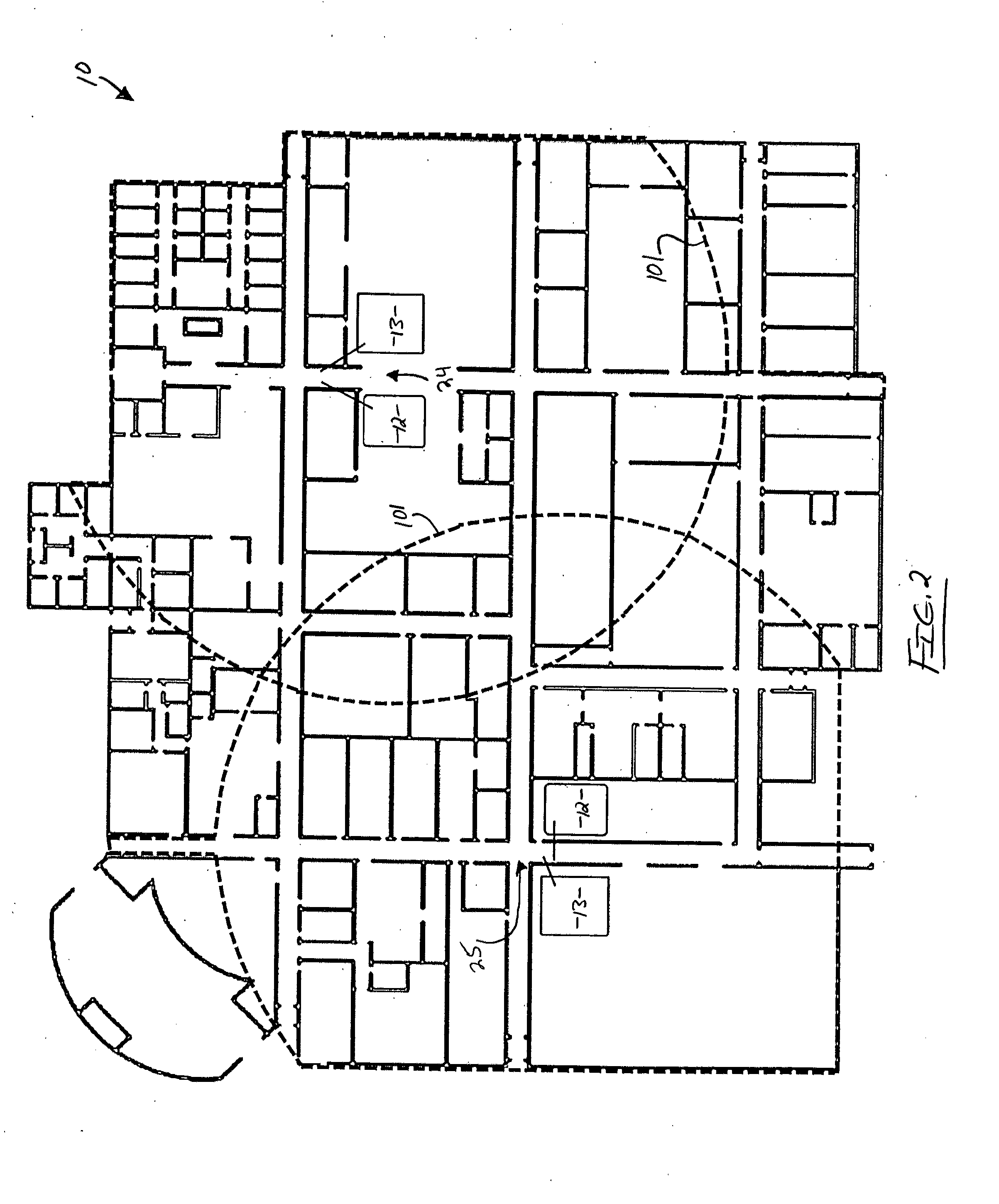Automated external defibrillator locating system and method
a technology of automatic external defibrillator and locating system, which is applied in the field of medical response systems, can solve the problems of not making the locating mechanism available to a person, not directing or guiding people to the nearest exit, and the audible system, so as to increase the awareness of on-site aed's
- Summary
- Abstract
- Description
- Claims
- Application Information
AI Technical Summary
Benefits of technology
Problems solved by technology
Method used
Image
Examples
Embodiment Construction
[0043]The placement of Automatic External Defibrillators (AED's) throughout schools, health clubs, businesses, airports, shopping malls etcetera has shown demonstrative effects on life savings by trained as well as lay persons. It perhaps goes without saying that early defibrillation is critical to the survival of cardiac arrest victims, and thus the rapid availability of these AED's is of utmost importance.
[0044]Financial constraints, however, often do not allow for high density placement of AED's. A lay rescuer unfamiliar with a facility may be standing within feet of an AED located around a corner and headed in a direction away from the closest AED when desirous of locating an AED. Labyrinth like hallways, corners, corridors, and doors may obstruct an AED from rapid locating. Due to the relatively high cost of AED's it is often not financially feasible to locate them as required for rapid identification and retrieval, therefore the prior art perceives a need for the provision of ...
PUM
 Login to View More
Login to View More Abstract
Description
Claims
Application Information
 Login to View More
Login to View More - R&D
- Intellectual Property
- Life Sciences
- Materials
- Tech Scout
- Unparalleled Data Quality
- Higher Quality Content
- 60% Fewer Hallucinations
Browse by: Latest US Patents, China's latest patents, Technical Efficacy Thesaurus, Application Domain, Technology Topic, Popular Technical Reports.
© 2025 PatSnap. All rights reserved.Legal|Privacy policy|Modern Slavery Act Transparency Statement|Sitemap|About US| Contact US: help@patsnap.com



